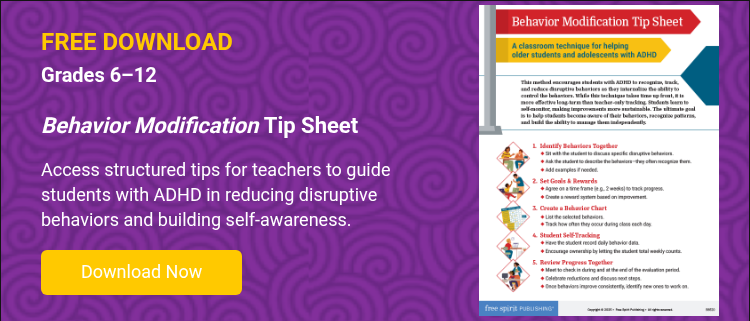Teachers face unique challenges when working with children and adolescents who struggle with ADHD. Without the right strategies, disruptive behaviors can interfere with learning for both the student and the class. Fortunately, research-backed classroom interventions can make a powerful difference. In this article, you’ll build a comprehensive understanding of how to use classroom interventions for students with ADHD to foster growth, responsibility, and confidence.
Understanding ADHD and Classroom Challenges
Children and adolescents with ADHD often present classroom challenges severe enough to interfere with their learning because of inattention and/or hyperactivity-impulsivity. Students with attention problems may have trouble focusing on important details and ignoring irrelevant distractions, paying attention in class, following instructions, and so on, while students with hyperactivity-impulsivity problems may have difficulties with sitting still, interrupting, restlessness, and so on.
Why Classroom Interventions Are Essential
Medication vs. Behavioral Strategies
Classroom interventions for students with ADHD typically include medications and/or behavioral therapy (behavior modification). The American Academy of Pediatrics (AAP) recommends behavioral therapy as the first line of defense for younger children (ages 2–5), and a combination of medications and behavioral therapy for older children and adolescents.
Although medication intervention for ADHD is readily available, classroom behavior interventions may be less so since they require implementation by a trained professional with expertise in behavior modification techniques. However, research-based interventions for behavior in the classroom have proven effective with students with ADHD and can be implemented by the classroom teacher without much difficulty.

Classroom Interventions for Students with ADHD: Addressing Inattention
Reducing Distractions
Classroom interventions for students with ADHD whose primary difficulties stem from inattention should focus on strategies that minimize visual and auditory distractions and enhance organizational skills and attention to detail.
Distractions can be reduced and attentive listening encouraged by seating the student near the front of the classroom and away from windows and hallway doors. This way, the student’s focus will be on the teacher rather than on the movements and interactions of other students or on visual and auditory distractions outside the classroom.
Supporting Instruction and Assignments
To help the inattentive student follow through with instructions and ensure completion of class and homework assignments, it’s a good idea to provide written copies of instructions and homework assignments in addition to writing them on the board.
Careless mistakes and organizational problems can be improved by assigning the student with ADHD a classmate volunteer to be a mentor or buddy who can point out careless mistakes and check classwork for completion before it is turned in. When provided with the opportunity, most students are more than willing to help classmates who are having trouble. Also, pairing the student with ADHD with a peer buddy provides opportunities for positive social interaction.
Color-Coding for Organization
Another way to help students with attention problems stay organized is to color-code classroom materials. For example, textbooks, folders, and notebooks can be color-coded according to subject: yellow for math, red for reading, green for science, and so on.
This approach is especially helpful for middle school and high school students who store their classroom materials in a locker and must rush between classes to change them out.
Classroom Interventions for Hyperactivity-Impulsivity
Managing Disruptive Energy
Hyperactive-impulsive students can be a challenge in the classroom because their behaviors are often disruptive to other students as well as the teacher. These students may have difficulty sitting still, may fidget or tap their pencils on their desks, or may get out of their seats and move around at inappropriate times.
One way to handle these behaviors, depending on the teacher’s personality and level of tolerance, is to seat the student in the back of the room next to the wall and an understanding classmate. Tell the student that he or she can get up from the desk, stand up, and perhaps turn around a time or two, but only after sitting still has become so difficult that it interferes with his or her focus and concentration. Make it clear that the student can get up from the desk only if it can be accomplished quietly and without disturbing other students.
Behavior Modification as a Classroom Behavior Intervention
Teaching Self-Monitoring
Another way to help the student with ADHD is to use a behavior modification technique in which the student learns how to pay attention to and modify hyperactive and impulsive behaviors.
This technique is more appropriate for older students and adolescents and involves several steps.
1. Sit down with the student and discuss specific behaviors that are inappropriate and disruptive in the classroom. The student may be as knowledgeable as anyone else about these behaviors and able to accurately describe them. If necessary, the teacher may provide additional examples.
2. Together, the student and teacher decide on a time frame for evaluating behavior changes and, if appropriate, a reward system for the reduction of disruptive behaviors.
3. Once the teacher and the student agree on the disruptive behaviors (it’s best to start with only four or five), the teacher can organize them in a chart that depicts each behavior and the number of times it occurs during class.
4. Each day, the student keeps track of the behaviors.
5. Make time for teacher and student check-ins, to discuss the process and student’s progress, and re-evaluate if needed.
6. At the end of the week, the student totals up the number of behaviors. The goal is to reduce the daily number of disruptive behaviors so that the weekly total decreases.
7. At the end of two weeks, the teacher and student meet to see if there has been a reduction in some or all of the behaviors.
8. Once all four or five behaviors are consistently improved, the teacher and student meet again to discuss other behaviors that need improvement.
Although this approach requires time on the part of the teacher, it can be more effective than other types of classroom behavior interventions because it makes the student responsible for identifying and tracking disruptive behaviors. The goal is to make the student aware of her or his disruptive behaviors, note their occurrence, and gradually internalize the ability to control them.
Adapting Behavior Modification for Younger Students
A modification of this approach can be used with younger children. The teacher points out the behaviors and makes the chart. When the child engages in the behavior, the teacher comes by and puts down a mark. At the end of the week, the teacher shows the child the number of marks and provides a reward if the number has gone down from the previous week.
This approach can also be used by parents to help the child with ADHD monitor and improve inappropriate and disruptive behaviors at home.
Why Classroom Interventions Matter
The behaviors of students with ADHD can be particularly challenging to teachers and disruptive to other students. In most cases, however, the students with ADHD are as unhappy about their behaviors as their teachers and peers are.
Classroom interventions for students with ADHD may be time-consuming, but when they result in enhanced learning and improved self-esteem, the investment is well worth it.
Building a Supportive Classroom for Students with ADHD
ADHD can present significant obstacles in the classroom, but with thoughtful planning and consistent strategies, teachers can create a supportive environment. By using evidence-based classroom interventions, educators can reduce disruptive behaviors, help students develop self-monitoring skills, and encourage long-term independence. Interventions for behavior in the classroom give students with ADHD the tools they need to succeed.
For teachers and parents alike, these methods not only reduce frustration but also help students with ADHD build confidence and thrive academically and socially.
Citations:
American Academy of Pediatrics: “ADHD: Clinical Practice Guideline for the Diagnosis, Evaluation, and Treatment of Attention-Deficit/Hyperactivity Disorder in Children and Adolescents.” Full report by the AAP about treatment interventions for children with ADHD.
U.S Department of Education: “Teaching Children with Attention Deficit Hyperactivity Disorder: Instructional Strategies and Practices.” Classroom interventions for students with ADHD.
N. Mather and Sam Goldstein, LD Online: “Behavior Modification in the Classroom.” Classroom interventions for students with ADHD.

